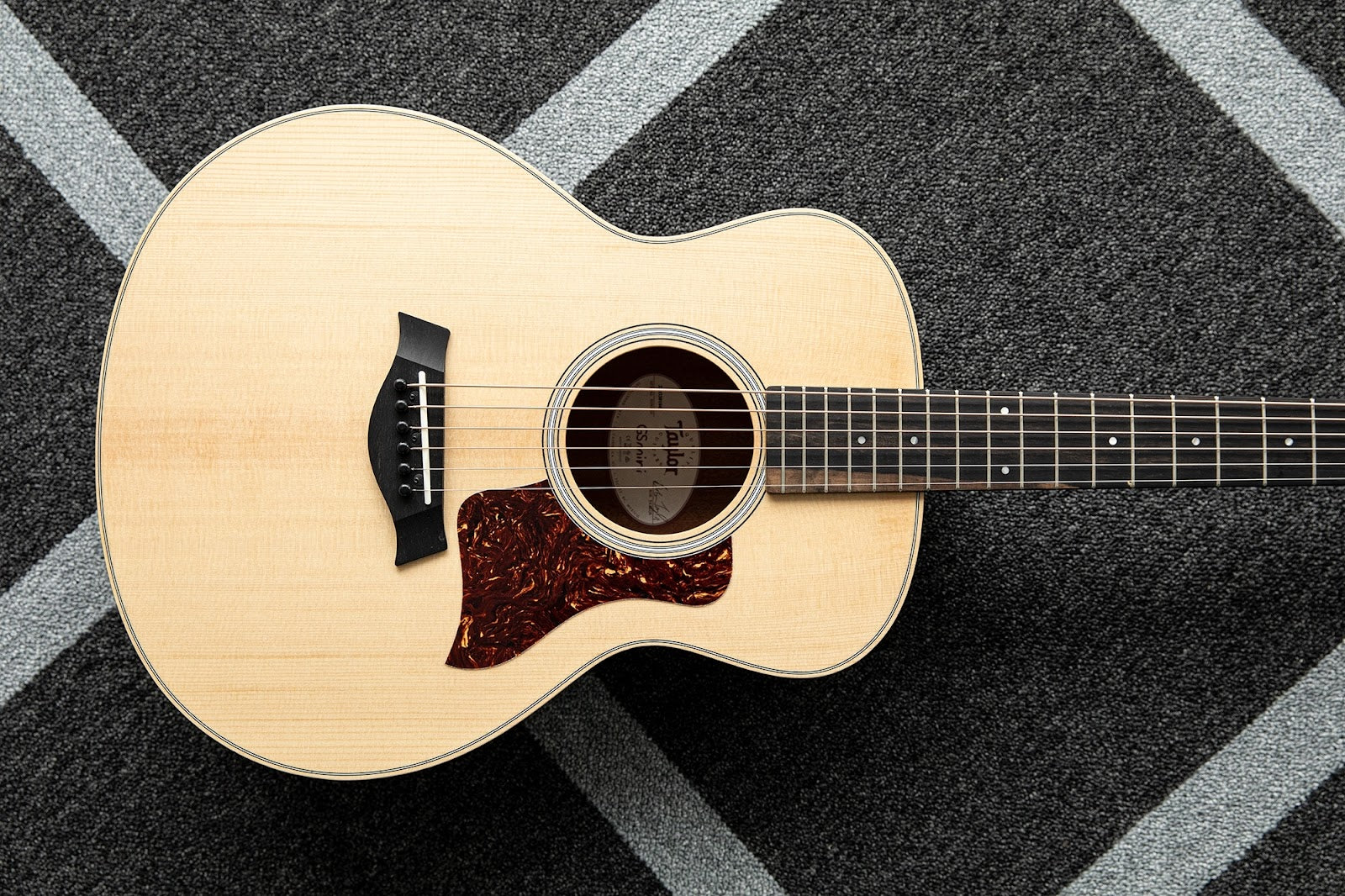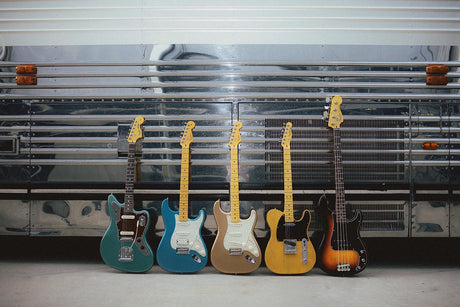At Reidys, we sell a lot of guitars from both camps, and many customers ask us which brand is better between Martin and Taylor and what the differences are between them. The answer is not so simple – neither brand is ‘better’ per se as they offer players different things. Also, guitars are very subjective so what’s right for one person isn’t always right for another.
That being said, we will break down some of the general differences between Martin and Taylor to help you decide if a Taylor guitar or a Martin is better and choose which guitar is right for you.
Martin vs Taylor: Is a Taylor Better Than a Martin?
Both Martin and Taylor offer a variety of body shapes and combinations of wood that result in a range of different tones.
Since Martin has been around and indeed popular for so long, the sound they give is what many people think of as ‘the classic acoustic guitar sound’.
Listen to the acoustic guitar on any big, classic album from the 60s or 70s; a lot of the time, it’ll be a Martin. Think Johnny Cash, Crosby, Stills & Nash, The Eagles, Elvis, John Martyn, Neil Young, Paul McCartney, Willie Nelson and so on.
Taylor guitars have a more modern sound, usually very crisp, balanced and articulate. Over the last 10 years, they’ve become one of the world’s biggest and most popular acoustic guitar brands, rivalling (or perhaps complementing) the likes of Martin and Gibson.
Generally, they tend to be a bit richer in the upper mids, with Martin having a bit more in the lower mids and more contemporary players like Damon Albarn, John Petrucci, Chelsea Wolfe, Mateus Asato, Orianthi and Taylor Swift are just some of the names playing Taylors.
Both Taylor and Martin have great pickup systems that they use. In most of their models, Taylor uses the second-generation Expression System (ES2). This system captures string movement behind the saddle instead of underneath it, helping better recreate the natural acoustic tone of your instrument through an amp or PA.
Martin works closely with Fishman to get cutting-edge pickup designs to capture that traditional and hallowed tone. The Fishman pickups on many of the new Martins are designed to give you the sound of a studio-quality mic in front of your guitar, so you get a natural, acoustic tone.
Martin vs Taylor – Bracing
For well over a century now, acoustic guitars have generally been built using X-bracing. The only problem with X-bracing is that it’s very difficult to increase the sustain without decreasing volume and vice versa.
Andy Powers, the Master Builder at Taylor guitars, not happy with having to make a compromise, worked for years on coming up with a new way of bracing acoustic guitars – enter V-Class Bracing.
In a nutshell, V-Class Bracing helps increase the volume and sustain without forgoing any tone. A very fortunate by-product of this bracing method is that the guitar’s intonation is improved, so your notes and chords ring out much more in tune, no matter where you play on the neck. Guitars that feature V-Class bracing have a very focused, studio-like sound and come in handy, especially when recording.
Martin uses traditional X-bracing methods, and so these guitars produce a more traditional acoustic guitar sound without the directness of V-Class. Neither is better, per se, just different!
Martin vs Taylor – Playability
Playability is difficult to judge, as all Martin and Taylor guitars can be adjusted so that they play how you want them to, and both brands also offer different neck profiles.
Taylor guitars, however, are made in such a way that makes it easier to adjust the neck angle to get the action that’s exactly right for you.
Martins have a set neck, which you cannot adjust the angle of, though this does mean you get better energy transfer between the neck and body, therefore, slightly more tone.
The fretboard radius on Martin and Taylor guitars is also usually different. The radius is the curvature of the neck. The smaller the number, the more curved it is and the larger it is, the flatter the fretboard will feel.
On most Martins, the radius will be 16″, and on Taylors, they’ll usually be 15″. Some people find barre chords easier to fret on Taylors because of the slightly smaller radius. The reverse is that melody and lead lines might be easier to pick out on the Martin, with the slightly flatter neck.
Martin vs Taylor – Build
As you might expect from such two different companies, how they build their guitars also differs.
Taylor employs modern techniques, many of which are unique to them, whereas Martin embraces the traditions that have served them so well for almost two centuries.
Taylor designs one perfectly crafted instrument and then reproduces that on a large scale with outstanding quality control and no room for error.
With Martin, each instrument is its own thing, crafted by hand by several specialists. At the Martin factory, the person who is best at making the necks makes the necks. The person best at cutting out the body does that, and so on, as it has been done for decades.
The end result with both Martin and Taylor is an expertly, well-made guitar. The way they get to that point is different.
One example of Taylor’s modern building techniques is how they attach the neck to the body. The New Technology (NT) neck sits in a perfectly sized pocket and supports the fretboard up to the 19th fret, which helps keep it straight and stable for longer.
While Taylor uses more cutting-edge technology, you can also find a Martin D-28 from the 1940s that sounds as good as it ever has and performs superbly – because the best of the best luthiers are doing the job.
Is a Taylor guitar better than a Martin?
Although there is much more to it, the whole Martin vs Taylor debate can be put down to a debate of tradition versus modernity.
The main differences between Taylor and Martin guitars are:
- Martins have a classic acoustic guitar sound, whereas Taylor has a more modern sound, usually very crisp, balanced and articulate.
- On most Martins, the radius will be 16″, and on Taylors, they’ll usually be 15″.
- Taylor guitars use innovative V-Class Bracing and New Technology (NT) necks, whereas Martins use classic X-bracing and don’t have adjustable necks.
Martin embraces their traditions to make guitars with classic acoustic guitar tones. With a more modern approach, Taylor has a sound that’s prominent within modern music of all genres. However, you will find modern players using Martin guitars – Ed Sheeran, Noel Gallagher and Jake Bugg being just three.
There are differences between Martin and Taylor that might mean you’ll prefer one or the other – or you’ll realise you could use both depending on the particular circumstance. If you buy a Martin or Taylor guitar, you’ll get an amazing acoustic guitar, either way.









